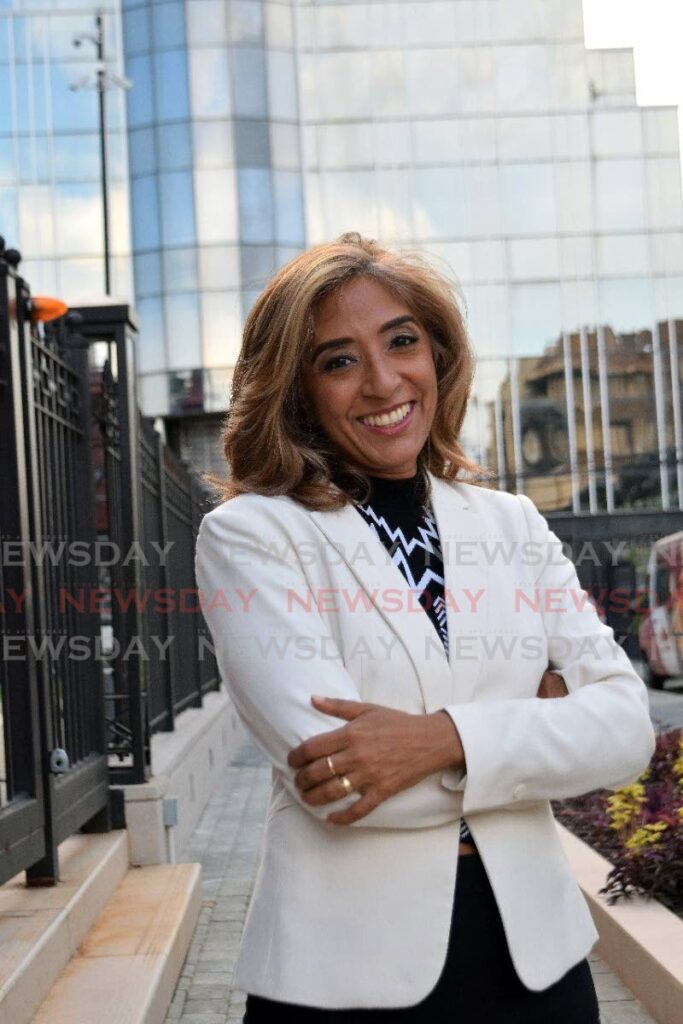Transgender discrimination worldwide

Dr Gabrielle Hosein
March 31 marked International Transgender Day of Visibility. One of its goals is to raise awareness about discrimination of transgender people worldwide.
I was reminded about how important this is after hearing a conversation between two women last week.
The first woman began a story about a transwoman – a person who was assigned to the category “male” at birth but who chooses to live and identify as a girl or woman at some point in their lives.
Of course, the story was about a transwoman in a women’s locker room at a gym and how a woman who felt this was inappropriate and threatening was the one that was removed for being discriminatory.
“Can you believe?” I overheard the first woman exclaiming.
“They have more rights than us!” responded the second.
I was aghast and stood there wondering if this was one of those moments when 21st-century Jesus would weep.
First, transgender people do not have more rights than “us.” They experience discrimination in housing, employment, police protection, schooling and health care, particularly transwomen, because they defy rules of manhood.
Transgender people face risk of bullying, stigma and violence potentially anywhere and anytime for not fitting expectations regarding how they should identify, look and live.
They often have families that do not accept them and navigate its psychological costs.
For example, last month, I had to help a teenager, who appeared as a tall, dreadlocked man but who identified as a woman, remember she deserves better than suicide.
Transgender people make livable lives out of hugely prejudicial contexts, but they do not come close to having rights, and certainly not more than those whose sex, gender and sexuality conform to patriarchal expectations as institutionalised across the state and law, the labor market, family, education system, religion and media.
Identifying as women, transwomen can face sexism, homophobia, transphobia and male sexual violence.
Somehow, bathrooms have become a locus of the backlash to transgender rights, just like patriarchal men used to take the vast complexity of legitimate global feminist issues and simplistically reduce them to who opens the door.
Separate bathrooms by sex provide safety and privacy for women (including transwomen) from male strangers. Unfortunately, this is well justified by statistics everywhere in the world, though most predators are those known and trusted by victims and much sexual violence happens in private settings such as homes.
Ending men’s sexual violence, and its never-ending threat in women and girls’ lives is an issue which the men’s movement has not truly taken on, but it’s absolutely necessary.
However, transwomen are not the same as heterosexual men who abide by patriarchal norms of hegemonic (or dominant) masculinity, and who pose a threat of sexual violence as a form of showing their control over a more subordinated sex.
There are also no statistics that show that transwomen (or transmen) are a comparable threat to non-transgendered women (or men). Perhaps there was an instance somewhere once, some single story, always from the US, but there’s no basis for defining people’s (and often women’s) views about trans rights in terms of mythical construction of fear.
Analogously, there may be some nearly nonexistent minority of women who falsely “cry rape,” but this meagre percentage has been used to delegitimate the truths that women tell about sexual violence. Most women do not lie about sexual assault. Yet we are all familiar with this backlash accusation that frames a more subordinated group as a greater threat to a dominant one which wields power more violently.
The “more rights than us” language is US White Right rhetoric that has been imported from the backlash to feminism, immigration, Black Lives Matter movements, Indigenous sovereignty movements and others trying to right historical wrongs.
It expresses the power of the privileged to misrepresent subordinated individuals, and movements which challenge an inequitable status quo, as dangerous, infectious, polluting, dirty, immoral, unnatural, inferior, overbearing or untrustworthy. It dehumanizes through caricature and stereotype.
It’s not far from wanting whites-only water foundations, restrooms, schools and restaurants as in apartheid South Africa or Jim Crow US. It’s the same weapon being aimed at transgender people today.
Transgender, non-binary and gender non-conforming people were part of all societies throughout history. Contemporary stereotypes cause harm, preventing us from understanding the complexity of injustice and welcoming movements to transform it.
Ultimately, transgender visibility helps to create a world where we are valued, not for meeting masculine or feminine ideals above all else, but for being loving, self-accepting and good human beings.

Comments
"Transgender discrimination worldwide"